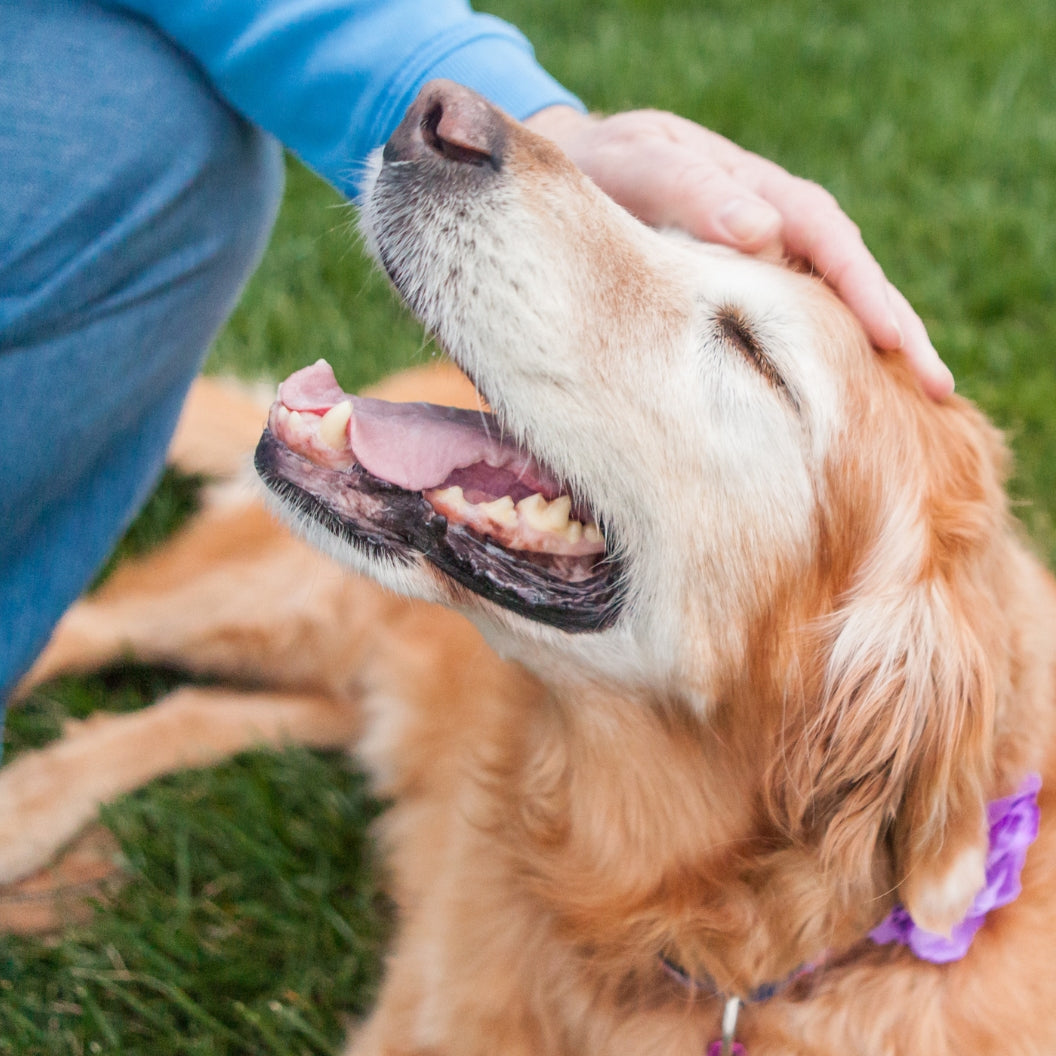As the temperature rises, it's crucial to remember that dogs are just as susceptible to heat as humans, if not more so due to their fur-covered bodies. Dogs have a higher body temperature than humans and can easily suffer from heat exhaustion or heat stroke if exposed to high temperatures for too long. This comprehensive guide explores how hot is too hot for dogs, the effects of temperature on our canine companions, how to identify signs of overheating, and measures to prevent heat-related problems.
Understanding Heat Tolerance in Dogs
Dogs, like humans, regulate their body temperature to stay cool. While we sweat to cool down, dogs primarily rely on panting and seeking shade to lower their body temperature. When the weather is hot, dogs will start panting more heavily, allowing moisture to evaporate from their tongues and airways, thus cooling their bodies. However, excessive heat can overload this natural cooling system, putting dogs at risk of heat exhaustion or heat stroke.
Factors Affecting Heat Tolerance:
- Breed: Certain breeds, such as Siberian Huskies or Alaskan Malamutes, are more tolerant of hot weather due to their ancestors originating from cold climates. These breeds have developed adaptations to thrive in colder temperatures, such as thick double-coats that insulate them from both cold and heat.
- Facial Structure: Brachycephalic breeds (dogs with crowded airways due to shortened head and neck structure), such as Bulldogs or Pugs, are more susceptible to heatstroke. Their short muzzles can obstruct their airways and make it harder for them to pant efficiently.
- Health Conditions: Dogs with pre-existing health conditions, such as heart disease, are at a higher risk of heat exhaustion or heat stroke.
- Humidity: High humidity can make it more challenging for dogs to cool down, as the moisture in the air hampers evaporation. This can lead to a buildup of heat in their bodies, making it even harder for dogs to regulate their temperature effectively.
- Age and Size: Puppies and older dogs may have more difficulty regulating their body temperature, as do very large or very small breeds.

How Hot is Too Hot for Dogs?
While dogs can handle warm temperatures, extreme heat can be dangerous and even life-threatening for them. The exact temperature at which it becomes too hot for dogs can vary depending on factors such as humidity, the dog's breed, size, and overall health. However, a good rule of thumb is that if the temperature is too hot for you, it's likely too hot for your furry friend as well.
Signs Your Dog is Overheating
By closely observing our dogs, we can identify when they are becoming too hot and take immediate action to cool them down. Watch for these indicators:
- Excessive panting: Dogs regulate their body temperature through panting, so if your dog is excessively panting, it could be a sign of overheating.
- Dizziness or weakness: A dog that is too hot may show signs of dizziness, stumbling, or weakness, indicating that their body is struggling to cool down.
- Bright red gums or tongue: The gums and tongue can appear bright red when a dog is experiencing heat stroke, suggesting that their body temperature is dangerously high.
- Rapid heart rate: Elevated heart rate can be an indicator of heat stroke. If you notice your dog's heart beating faster than normal, it's important to take action immediately.
- Rash or excessive moisture: Heat rash or excessive moisture on the skin can suggest that your dog is experiencing heat exhaustion, as their body attempts to cool down through sweating.
- Vomiting or diarrhea: These can be signs of severe heat stress and require immediate attention.
- Lethargy or unresponsiveness: If your dog becomes unusually quiet or unresponsive, it may be suffering from heat exhaustion or stroke.
Dog Breeds and Heat Tolerance
Different dog breeds have varying levels of heat tolerance due to their physical characteristics, coat types, and genetic backgrounds. Understanding your dog's breed-specific traits can help you better manage their exposure to hot weather.
Which dog breeds do best in hot weather?
Some breeds are naturally more adept at handling warmer temperatures. While all dogs need protection from extreme heat, these breeds generally cope better in hot weather:
- Chihuahua: Originally from Mexico, Chihuahuas are well-adapted to warm climates.
- Greyhounds and Whippets: Their short coats and lean bodies help them regulate temperature efficiently.
- Terrier Breeds: Many terriers, like the Airedale or Jack Russell, have wiry coats that provide some heat protection.
- Vizsla: This Hungarian breed has a short coat and was bred to work in warm conditions.
- Weimaraner: Their short, sleek coat helps them stay cooler in warm weather.
- Beagles: Originally bred for hunting in various climates, Beagles have moderate heat tolerance.
- Border Collie: While they have a double coat, Border Collies are active and adaptable to various temperatures.
- Doberman Pinschers: Their short, sleek coat helps with heat regulation.
- German Shorthaired Pointer: Bred for hunting in various conditions, they handle heat reasonably well.
- Basenji: This African breed is well-adapted to warm climates.
Which dog breeds are most sensitive to heat?
On the other hand, some breeds are more susceptible to heat-related issues due to their physical characteristics. Extra caution should be taken with these breeds in hot weather:
- Bulldogs and French Bulldogs: Their flat faces (brachycephalic) make it harder for them to pant effectively and cool down.
- Boston Terriers: Another brachycephalic breed that can struggle in hot weather.
- Pugs: Their short snouts and compact bodies make them prone to overheating.
- Chow Chows: Their thick double coats can make it difficult for them to cool down in hot weather.
- Siberian Huskies and Alaskan Malamutes: While adapted for cold climates, their thick double coats can make hot weather challenging.
- Boxers: Their short snouts can make panting less effective for cooling.
- Pekingese: Their flat faces and long coats make them susceptible to heat stress as they cannot cool down as easily with their flat faces.
- Saint Bernard's: Their large size and thick coats make them prone to overheating.
- Newfoundlands: Originally bred for cold water rescue, they have thick coats that can be problematic in heat.
- Cavalier King Charles Spaniels: Their small size and moderately long coat can make heat regulation challenging.
It's important to note that individual dogs within these breeds may have different heat tolerances based on their overall health, age, and specific physical characteristics. Regardless of breed, all dogs need protection from extreme heat and should be monitored closely in hot weather.
Dangers of High Temperatures for Dogs
Extreme heat can pose serious risks to dogs, especially when exposed for extended periods. Heat exhaustion, the precursor to heat stroke, can cause dogs to become dehydrated, fatigued, and disoriented. If not addressed promptly, heat exhaustion can progress to heat stroke, which is a life-threatening condition with potentially irreversible damage.
Dogs with pre-existing heart disease are particularly vulnerable to the dangers of high temperatures. The strain of excessive heat can exacerbate existing heart conditions, leading to cardiac distress or failure. Heat stroke can also reach dangerous levels, causing multiple organ failure and, in severe cases, even death.
How Hot is Too Hot for a Dog to Be Outside?
The answer depends on several factors, including the climate in your area, the specific physical activity your dog will be engaged in, and the time of day. In general:
- Avoid strenuous activities during the hottest parts of the day, especially in summer months.
- The Humane Society of the United States (HSUS) recommends walking dogs early in the morning or late in the evening when temperatures are cooler.
- Pay attention to humidity levels, as high humidity can make heat feel more intense and impair dogs' ability to cool themselves effectively.
What temperature is too hot to walk dogs on pavement?
Hot pavement can present significant hazards for dogs, including the risk of burns and heat exhaustion. Dogs' paws are highly sensitive to heat, and hot pavement can cause paw pad burns. Keep in mind that the pavement might be too hot to walk your dog if the temperature is 30°C or higher.
Consider these points:
- The width of a dog's paw can affect their tolerance to hot pavement, with dogs that have wider paws having a higher heat tolerance.
- Opt for early morning or evening walks when the pavement is cooler.
- Consider using dog booties to protect their paws from the heat.
- Test the pavement temperature with your hand before walking your dog. If it's too hot for your hand, it's too hot for your dog's paws.
Preventing Heat-Related Problems in Dogs
Prevention is always the best approach when it comes to heat-related problems in dogs. Here are some strategies to keep your dog safe:
1. Provide a Cool Environment
- Ensure access to shade, whether it's natural shade from trees or artificial shade structures.
- Keep dogs indoors in air-conditioned environments during the hottest parts of the day.
- Use fans to improve air circulation in indoor spaces.
2. Maintain Proper Hydration
- Ensure constant access to fresh, cool water.
- Monitor your dog's water intake and refill the water bowl as needed.
- Consider incorporating moisture-rich dog food into your dog's diet to supplement their hydration levels.
- Encourage your dog to drink water after physical activity to replenish moisture lost through panting.
- Watch out for signs of dehydration, such as dry gums and reluctance to drink.
3. Time Outdoor Activities Wisely
- Walk dogs during cooler parts of the day (early morning or late evening).
- Avoid strenuous activities in hot weather.
- Adjust the intensity and duration of exercise based on the temperature and your dog's condition.
4. Never Leave Dogs in Hot Vehicles
- Leave dogs at home rather than taking them in hot vehicles when possible.
- If dogs must accompany you, never leave them unattended in a parked car, even with the windows cracked.
- Opt for air-conditioned transportation or bring along a water supply and keep the air conditioning or fans on to help regulate their body temperature.
Even with the windows cracked, the temperature inside a car can rise significantly within minutes, reaching dangerous levels. To ensure the safety of dogs in hot weather:

Emergency Response to Heat-Stressed Dogs
Knowing how to respond to heat-stressed dogs can mean the difference between life and death. If you suspect your dog is overheating:
- Move them to a cool, shaded area immediately.
- Wet their body with cool water, not ice-cold, to gradually lower their temperature.
- Offer small amounts of cool water to drink, but avoid forcing them to drink too much.
- Contact a veterinarian for further guidance, especially if your dog is exhibiting severe symptoms.
- Keep the dog as calm and comfortable as possible, and continue to monitor their condition closely.
When to Consult a Vet
It's crucial to consult a veterinarian if:
- Your dog experiences heat stroke or severe heat exhaustion.
- You have concerns about your dog's heat tolerance.
- Your dog has underlying health conditions that may be affected by heat.
- You notice any unusual symptoms or behaviors during hot weather.
Veterinarians can provide the most accurate assessment of your dog's condition and recommend the appropriate treatment.
Understanding how heat affects our canine companions is crucial for their safety and well-being. By recognizing the signs of overheating, taking preventive measures, and knowing how to respond in emergencies, we can help our dogs stay safe and comfortable during hot weather. Remember, prevention is key when it comes to protecting our furry friends from the dangers of excessive heat. Stay informed, stay vigilant, and keep your dogs safe and cool all summer long.









Leave a comment
All comments are moderated before being published.
This site is protected by hCaptcha and the hCaptcha Privacy Policy and Terms of Service apply.